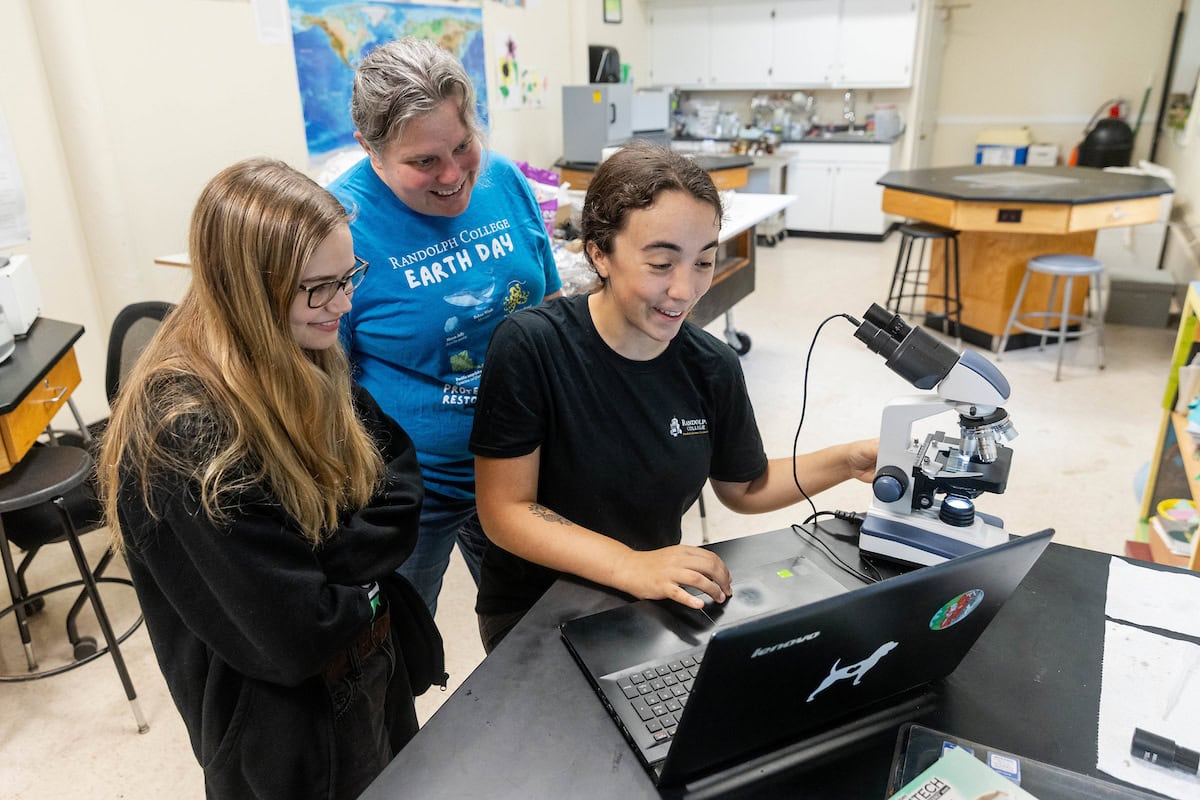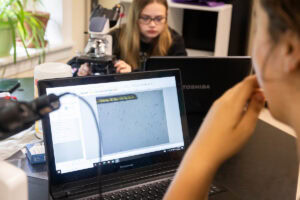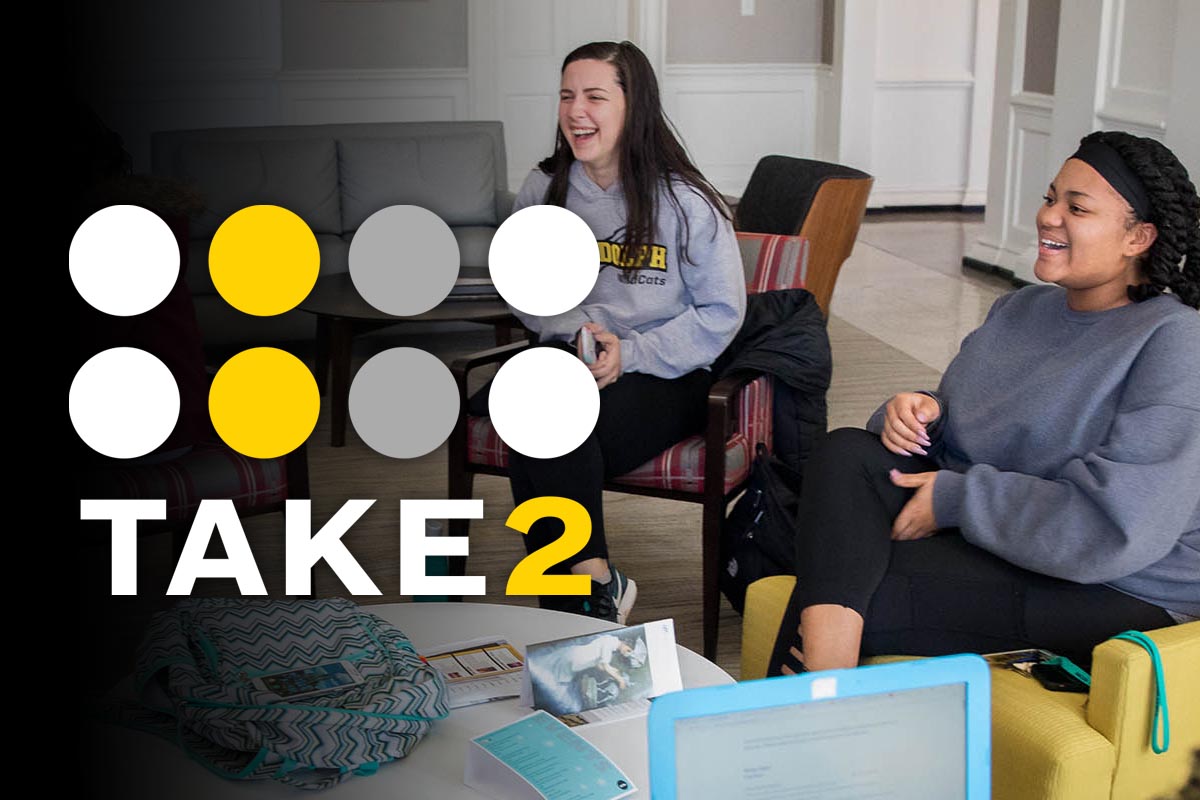‘The little guys deserve some love too’: Summer Research examines microalgal diversity in seagrass beds
Randolph’s Summer Research Program is a competitive, paid program that pairs students with faculty members to conduct research in their areas of interest. This story is part of an ongoing series featuring their work on campus this summer.

Erin Winslow ’26, professor Sarah Sojka, and Olivia Lorenzo ’27 look at images of samples they took on the Eastern Shore of Virginia as part of their Summer Research Program project.
 It didn’t take long for Erin Winslow ’26 and Olivia Lorenzo ’27 to find common ground.
It didn’t take long for Erin Winslow ’26 and Olivia Lorenzo ’27 to find common ground.
Both marine science majors chose the field with an initial interest in large animals—think sharks, dolphins, and whales—before gaining an appreciation for the tiny, unseen organisms that form the foundation of aquatic ecosystems.
“The little guys deserve some love too,” Lorenzo recently joked while scrolling through images of specimens for the Summer Research Program (SRP) project she and Winslow are working on with professor Sarah Sojka.
For Winslow, a double major in biology, the realization came after taking Sojka’s Marine Organisms and Ecosystems course, where she studied ecosystems ranging from intertidal wetlands to the deep ocean along with the plants and animals that live there.
“It was my favorite class of all time,” she said. “I learned so much, and it kind of opened my eyes to these smaller organisms. I really like identifying them. They can be so detailed and so pretty. Not a lot of people understand or get how amazing they are.”
Their work this summer is all about those little guys, as Lorenzo called them, examining microalgal diversity and different methods of studying it.
The project builds on research Sojka, a professor of environmental science and marine science, did with students in 2021 and 2022 on the Eastern Shore of Virginia, home to a large and successful seagrass restoration project.
Sojka’s previous SRP projects examined the benthic microalgal communities within and outside the restored seagrass beds using two different methods—visually and based on their photosynthetic pigments.
This summer, they will employ those methods again—with Winslow handling the by-eye identification of samples they took earlier this month—while adding new ones.
Lorenzo is using an artificial intelligence program to see how accurately it can identify the microorganisms.
Then, in the fall, they’ll head to the Virginia Institute of Marine Science’s Eastern Shore Laboratory to extract environmental DNA from the samples with the help of researchers there.
“It’s this great opportunity to sort of tag on to work they’re already doing, which makes it more cost effective for us,” Sojka said. “We actually get to be involved in more parts of the process this way, whereas otherwise we would’ve had to send the samples off.”
The hands-on nature of the marine science program is all about helping students build their resumes and, like Winslow and Lorenzo, find their niches.
“One of the things we’ve talked about in classes is that there’s a lot more competition for the jobs looking at whales and sharks,” Sojka said. “Not a lot of people are going to be excited about microscopic identification. There’s more opportunity there.”
Tags: marine science, srp 2025, summer research 2025
